Rediscovering The Mundane
First published in Sanctuary Asia,
Vol. 43
No. 6,
June 2023
A Field Diary from the Pakke Tiger Reserve
By Nandini Velho
While setting up the camera, checking for height, angles, and crawling like a cat on the forest floor, I heard my colleague Kandra Brah, a member of the Special Tiger Protection Force, say, “Partner partner, tiger tiger!”
And there he was, my first tiger sighting in Pakke, ambling along a dry riverbed against the backdrop of the lowland rainforests and the Himalaya. It was a huge male tiger. I saw it for no more than 40 seconds before it escaped into the dense vegetation, hidden by the dim light of the forest.
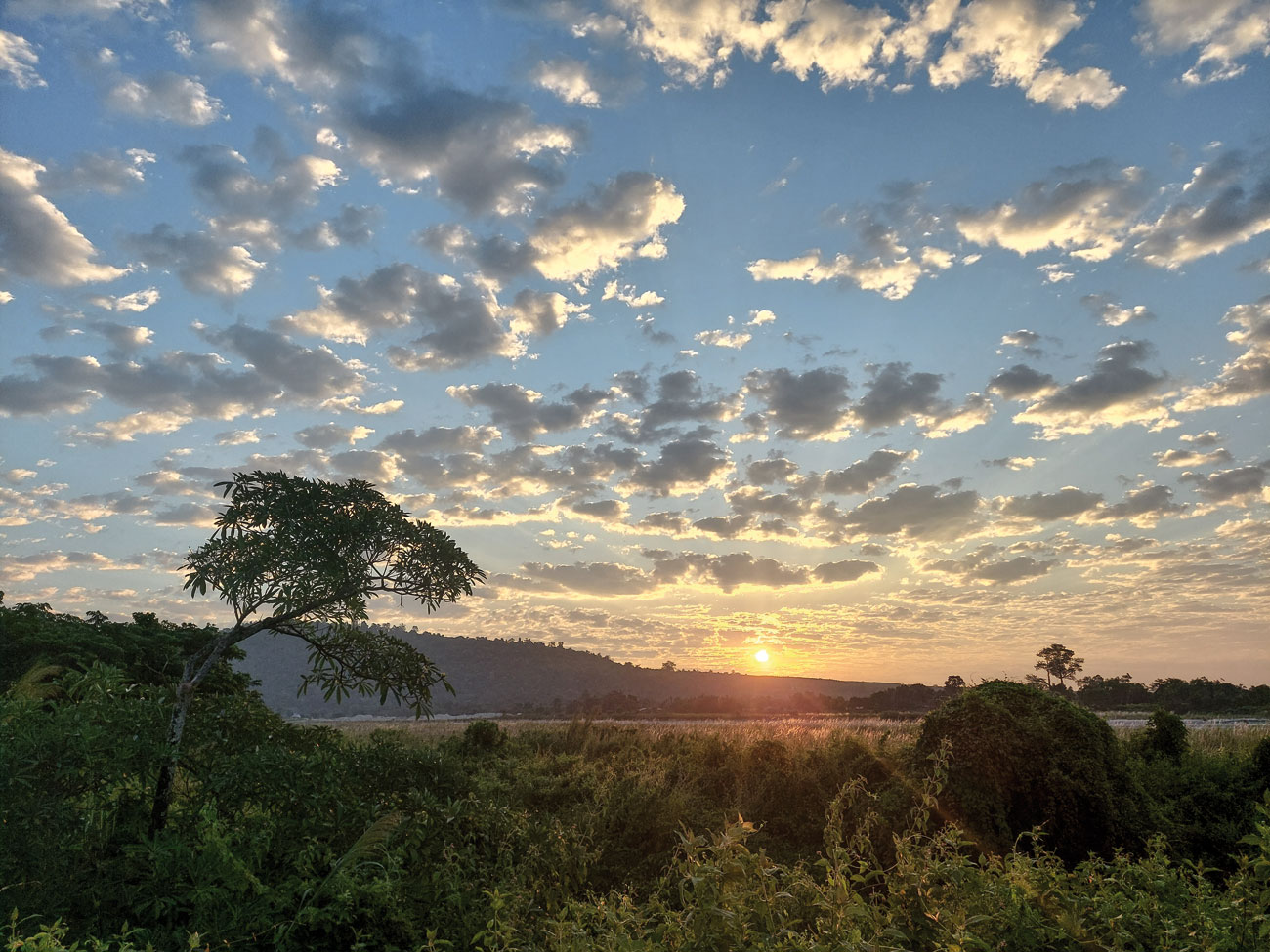
The sun rises over Arunachal Pradesh’s Pakke Tiger Reserve, where the author conducted field work as part of the All India Tiger Estimation Exercise. Photo: Gaurab Talukdar.
I was in the Pakke Tiger Reserve, in Pakke Kessang district of Arunachal Pradesh in Northeast India. The field work we had undertaken would eventually find its way into the tiger estimation figures of the country. This year, the Government of India, on the 50th anniversary of Project Tiger released its numbers. I remember being part of the census conducted before the outbreak of the COVID-19 pandemic. Recovering from the strange social and personal effects of the virus, and living through a polycrisis, makes me cherish both the mundaneness of some fieldwork days and the occasional, very memorable sightings in the field. Journals, notepads and recollections from my fieldwork in Pakke Tiger Reserve in Arunachal Pradesh have given me life and love. When I read a diary entry with no fancy titles or font, dated December 5, 2015, one of my field experiences surfaces from the recesses of my mind.
At the Panchali anti-poaching camp that winter, we performed the customary field night ritual – sitting around a fire, where we cooked together, kept warm, or hummed tunes softly emanating from our radio. The fire also deterred nighttime visits from wild elephants and (we hoped!) kept tiny ticks away. Apart from the pachyderms, the Pakke Tiger Reserve, located on the Assam-Arunachal Pradesh border, has high species diversity, is the northern-most extent of rainforests of the world and is at the cusp of the forested hills of Arunachal Pradesh and the Assam plains.
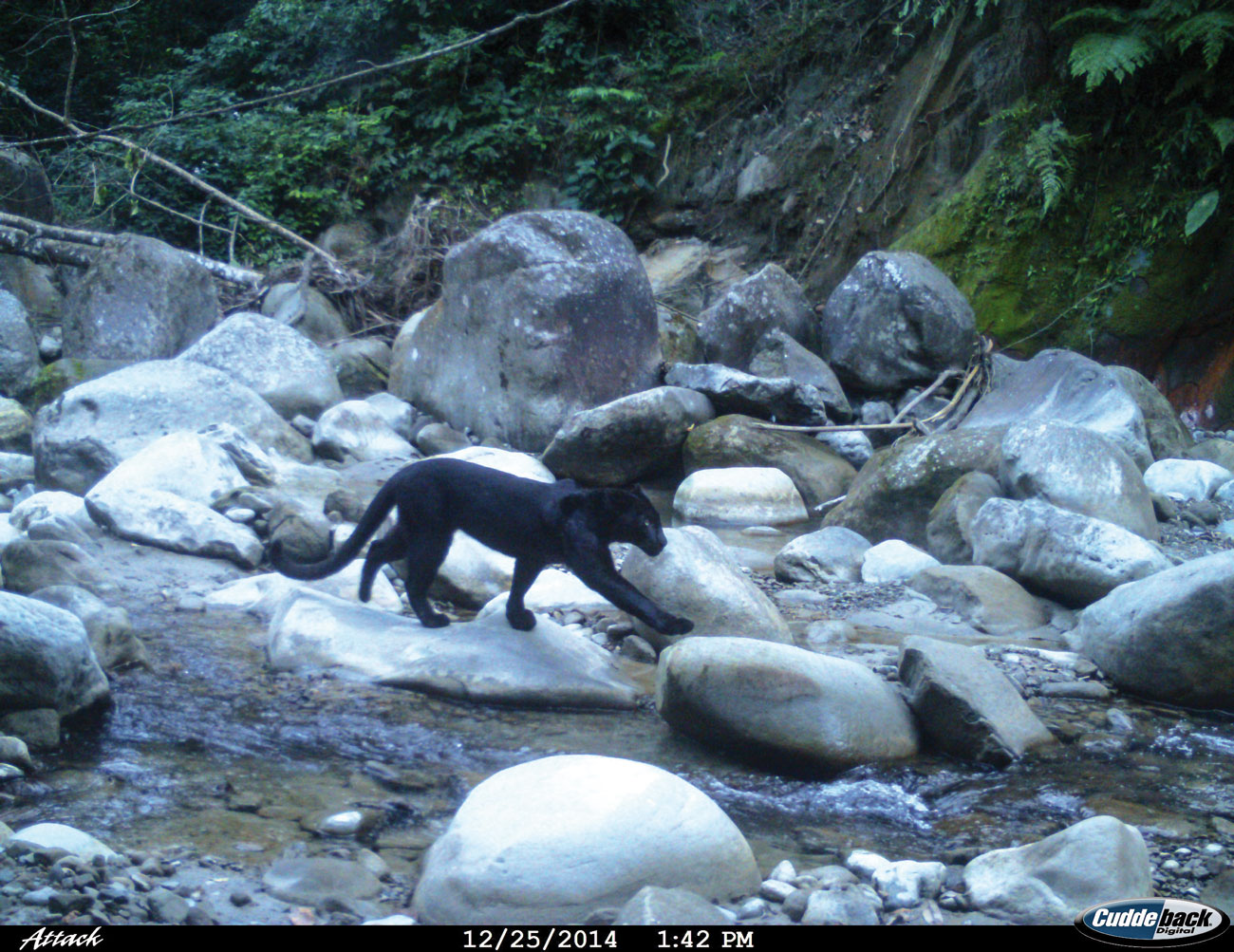
A melanistic leopard, Indian leopard and a forest guard were captured by the camera trap crossing the same stream at different times in the Pakke Tiger Reserve, which has high species diversity. It is the northern-most extent of rainforests of the world, and is at the cusp of the forested hills of Arunachal Pradesh and the Assam plains. Photo: Pakke Tiger Reserve Forest Department.
At camp, meals typically consist of two basic rice-based meals with vegetables, salt and chilies. Cooking with oil is a luxury, but palate preferences lean towards steamed food anyway, and food options are limited. The ability to select food seemed distant in 2015. The National Tiger Conservation Authority asked Protected Area managers and staff to intensify patrolling during the lockdown of 2020 as poaching pressures were deemed to be high across states. However, at a larger level, the Government of India did not account for any structural packages for forest protection. Pandemic relief packages for the environment instead revealed themselves as coal
auction bids.
Remembering More Than Sightings
Pandemic or no pandemic, a typical day at camp involves the forest watcher waking up the earliest to put the kettle on to boil. A lone radio becomes a community alarm clock. While I saw my first tiger in Pakke later in the day, in the darkness of an early dawn, I was woken up by a voice shouting “Leopard, leopard!”. Before I could open the small wooden window of my room, the elusive cat had vanished.
A touch disappointed, I went down to the fire and helped steam the junglee paan (Piper spp.) that forest watchers routinely collected from around the shaded areas of the camp. Amidst the ruckus the dishes and utensils were creating, I missed another shout: (cat cat!).” The disappointing silence that ensued was punctuated by planning and banter, as we chalked out plans for the rest of our day over a breakfast, that would surely pass off as lunch anywhere else in the country.
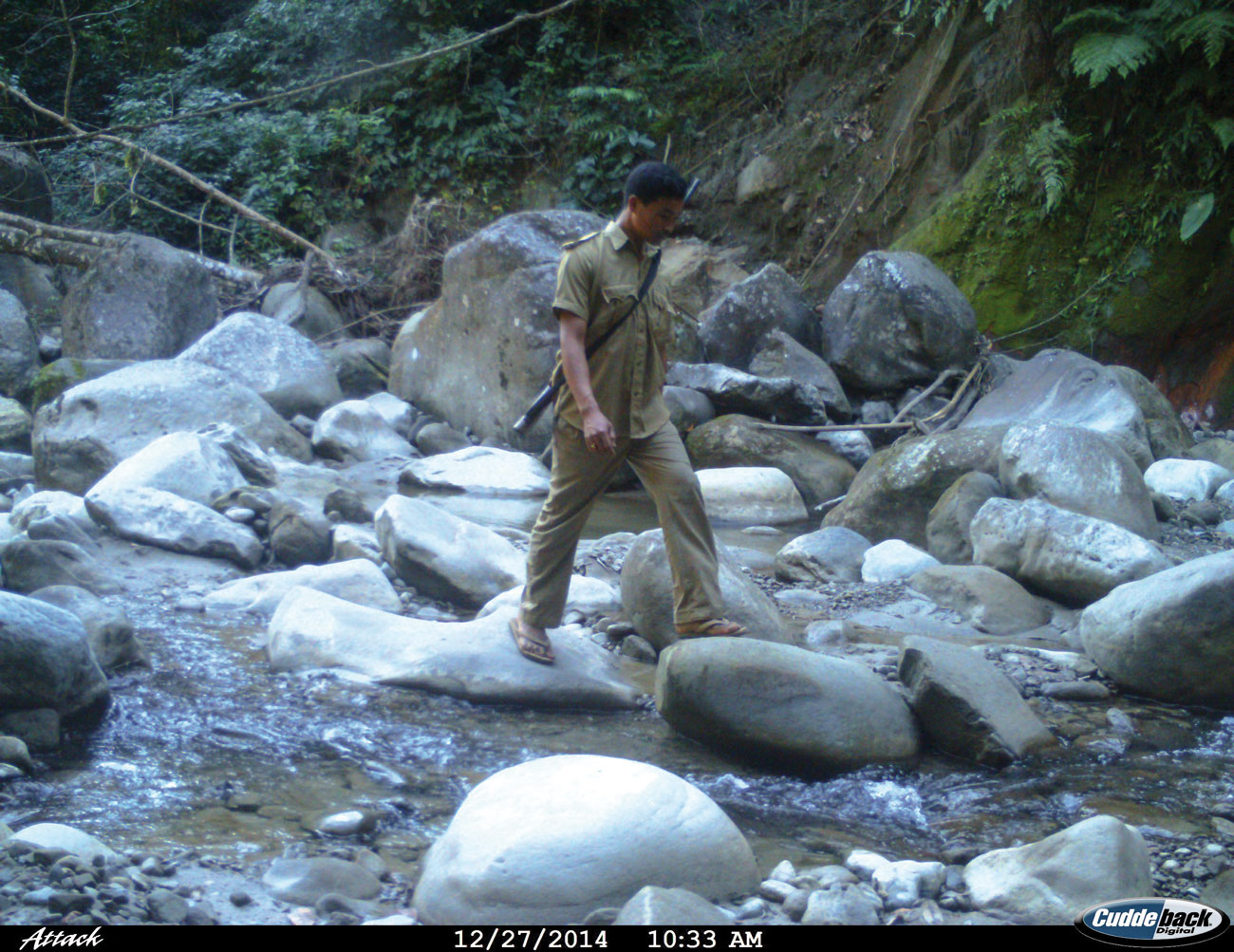
A melanistic leopard, Indian leopard and a forest guard were captured by the camera trap crossing the same stream at different times in the Pakke Tiger Reserve, which has high species diversity. It is the northern-most extent of rainforests of the world, and is at the cusp of the forested hills of Arunachal Pradesh and the Assam plains. Photo: Pakke Tiger Reserve Forest Department.
Armed with a GPS, camera trap, field diary, binoculars, pen, machete, and salt against leeches, we headed out to set up a camera trap, after motivating some of our less enthusiastic field staff to start on the arduous trail. The camera trapping was part of the All India Tiger Estimation exercise, similar to taking biometrics for an Aadhaar card, except that it was for big cats!
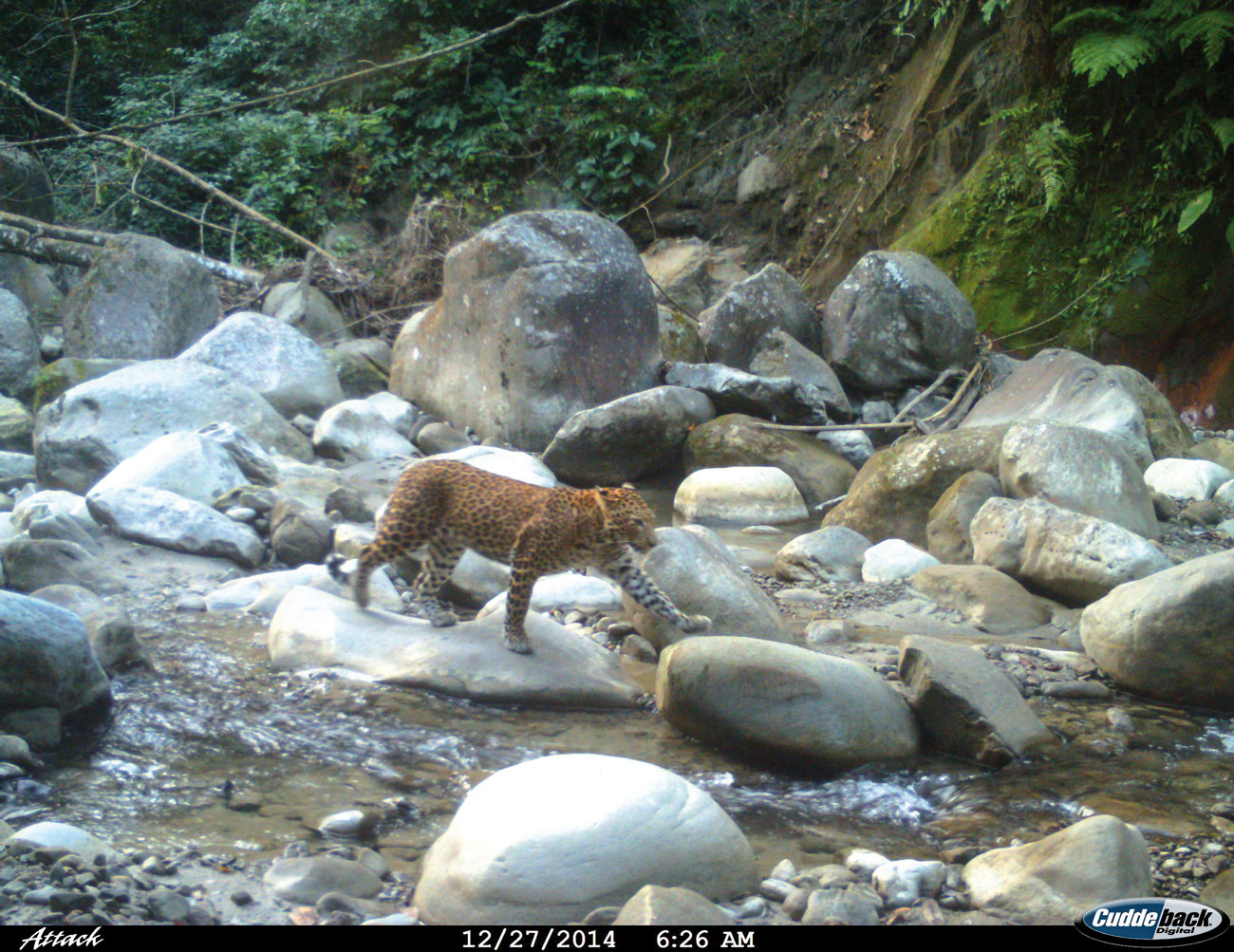
A melanistic leopard, Indian leopard and a forest guard were captured by the camera trap crossing the same stream at different times in the Pakke Tiger Reserve, which has high species diversity. It is the northern-most extent of rainforests of the world, and is at the cusp of the forested hills of Arunachal Pradesh and the Assam plains. Photo: Pakke Tiger Reserve Forest Department.
The tiger we saw was walking straight toward our camera trap and moved us to spontaneously hug each other in celebration! Maybe it was gender; maybe it was field friendships. This was my first tiger sighting in the last 10 years. Years later, I remember describing my sighting to a professor at Princeton University when I was working on a paper on the impact of oil palm plantations in India. He summed it up well: “This is how I would like to see a tiger on a regular day of work.” We continued to the next site, where there were lots of butterflies busy mud-puddling (my diary has an unresolved species entry on whether I saw a painted lady or an Indian red admiral).
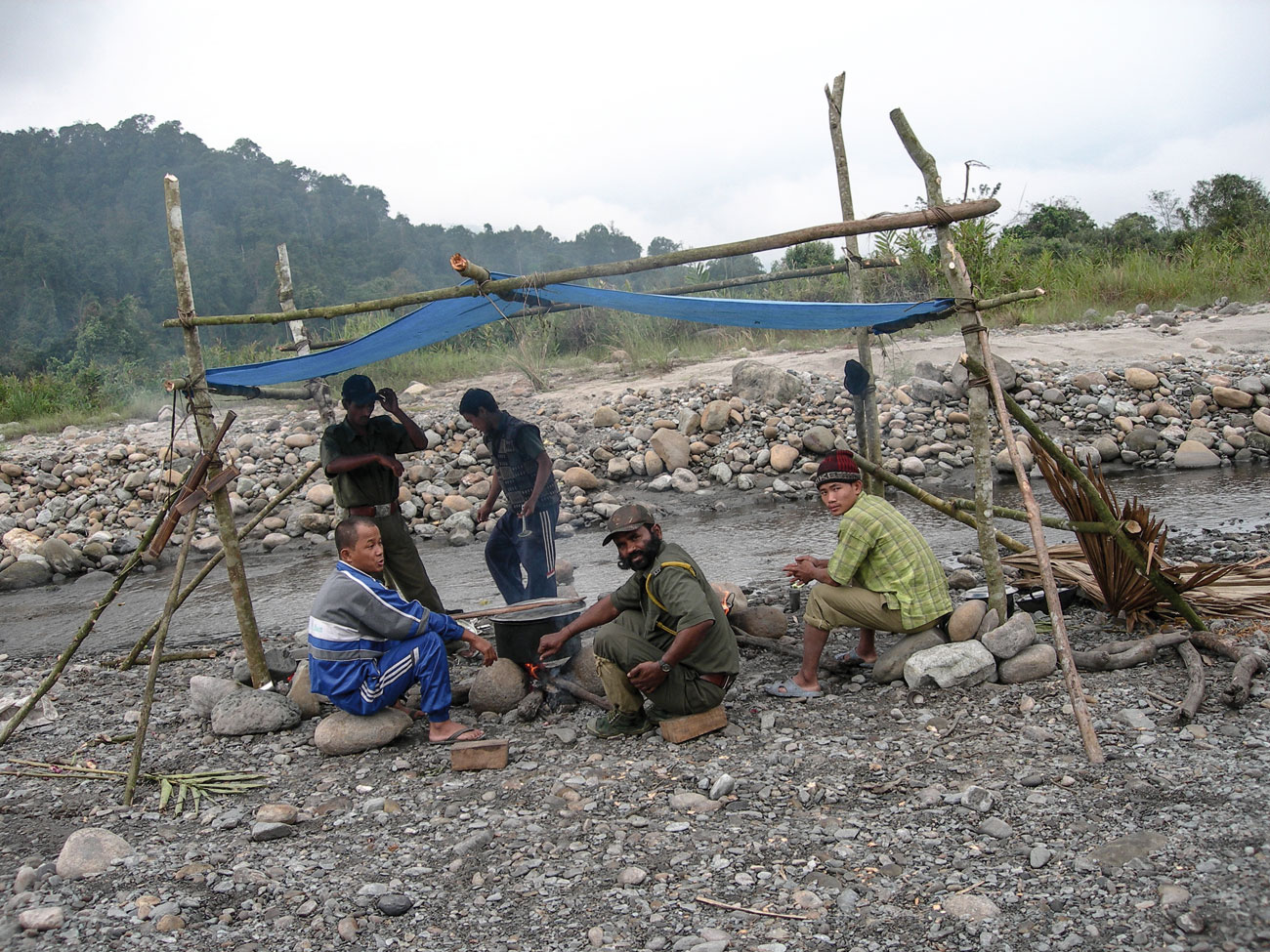
About sixteen years ago there were very few anti-poaching camps; staff and researchers usually stayed in outdoor kitchens as seen here. The setting up of camps and patrolling routes was initiated by Arunachali field-based officers such as Tana Tapi and Chuku Loma who stayed in the forest and in such camps along with their staff. Seen in the picture here is P.D. Majhi who was later killed by poachers. Photo: Tana Tapi.
Whether blessed with sightings or not, my diaries were filled with, and inspired by, the curiosity and wonder of the natural world that pervades your soul in havens such as the Pakke Tiger Reserve, that house a myriad species, not only do many of them remain undocumented by science but there is so much more to be studied. These entries are still a reminder to get to know the natural world more closely, to get a chance to tell its story, and appreciate the magic in its everydayness.
Nandini Velho is an ORA India Fellow and is working with colleagues to set up The Seed Lab, a multi-disciplinary collective for conservation in Northeast India. Read more about her here: https://sanctuarynaturefoundation.org/award/nandini-velho






